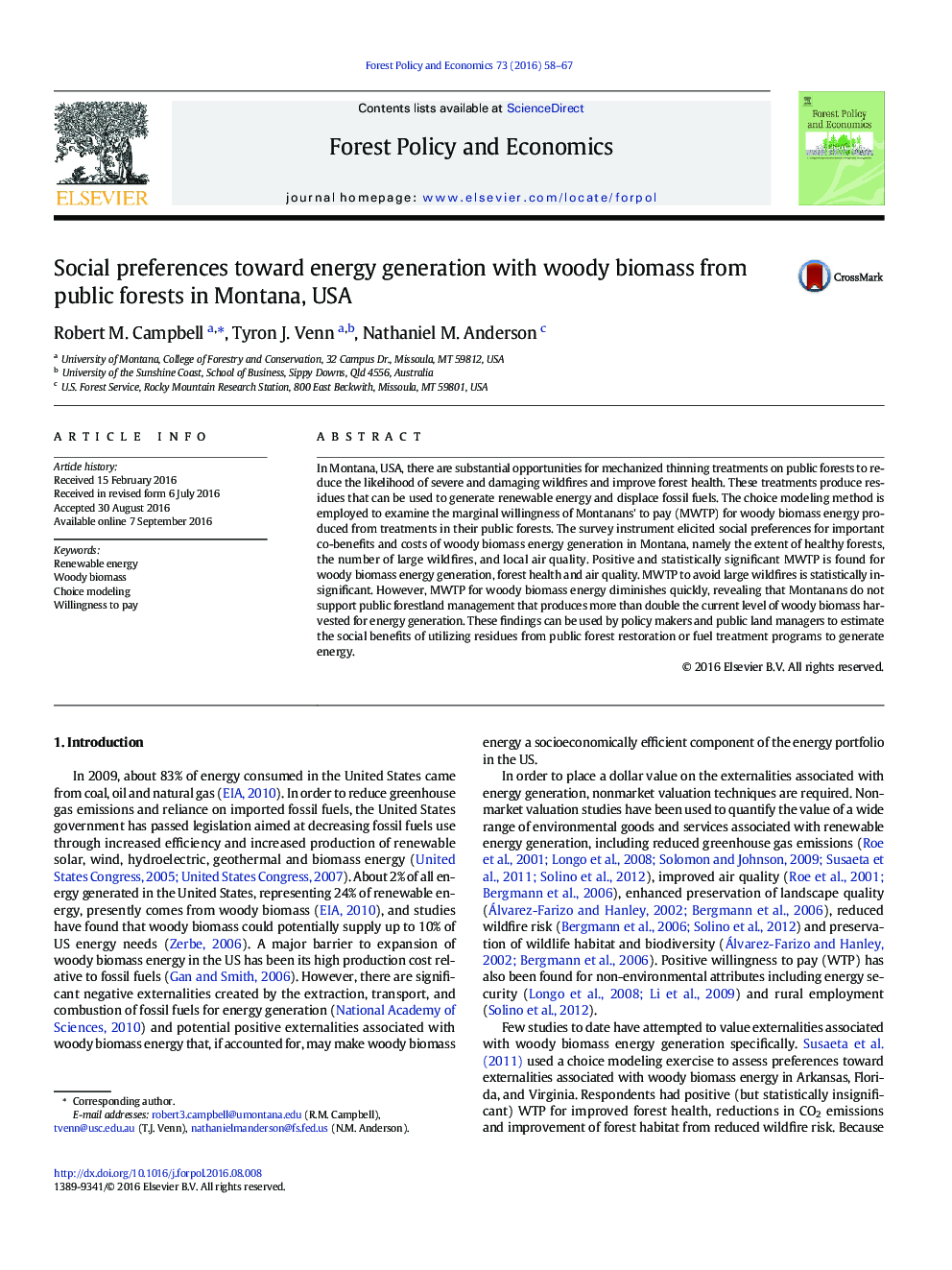| کد مقاله | کد نشریه | سال انتشار | مقاله انگلیسی | نسخه تمام متن |
|---|---|---|---|---|
| 6459815 | 1421666 | 2016 | 10 صفحه PDF | دانلود رایگان |
- Preferences for woody biomass energy, forest health, air quality and wildfires.
- Montanans reserved their highest WTP for forest health restoration.
- Positive WTP for energy produced with woody biomass harvested on public forests.
- Marginal benefits from woody biomass energy from public forests diminish rapidly.
In Montana, USA, there are substantial opportunities for mechanized thinning treatments on public forests to reduce the likelihood of severe and damaging wildfires and improve forest health. These treatments produce residues that can be used to generate renewable energy and displace fossil fuels. The choice modeling method is employed to examine the marginal willingness of Montanans' to pay (MWTP) for woody biomass energy produced from treatments in their public forests. The survey instrument elicited social preferences for important co-benefits and costs of woody biomass energy generation in Montana, namely the extent of healthy forests, the number of large wildfires, and local air quality. Positive and statistically significant MWTP is found for woody biomass energy generation, forest health and air quality. MWTP to avoid large wildfires is statistically insignificant. However, MWTP for woody biomass energy diminishes quickly, revealing that Montanans do not support public forestland management that produces more than double the current level of woody biomass harvested for energy generation. These findings can be used by policy makers and public land managers to estimate the social benefits of utilizing residues from public forest restoration or fuel treatment programs to generate energy.
Journal: Forest Policy and Economics - Volume 73, December 2016, Pages 58-67
